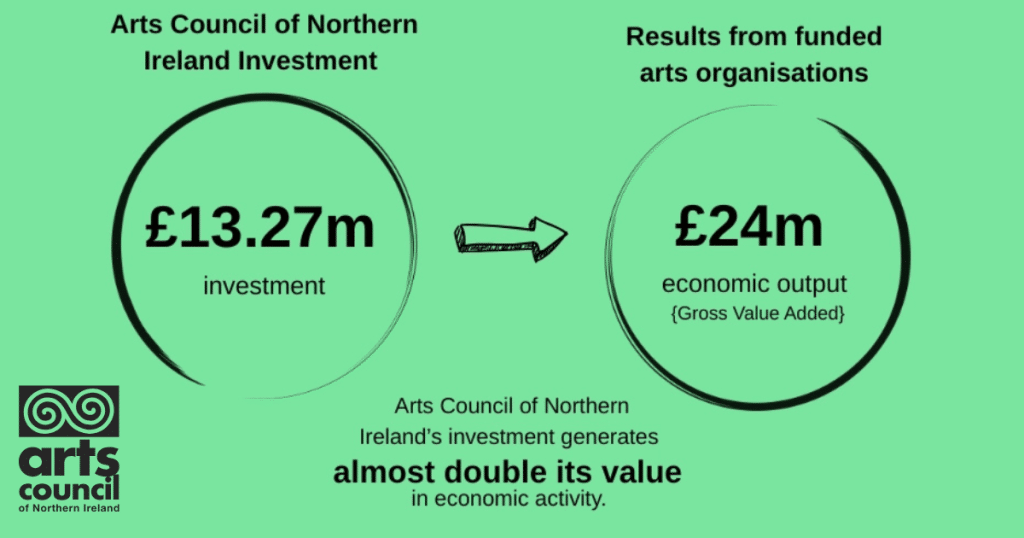The Arts Council of Northern Ireland commissioned Simetrica-Jacobs, in partnership with Tom Fleming Creative Consultancy (TFCC), to estimate the social and economic return of ACNI’s investment in the arts sector in Northern Ireland.
This work seeks to help raise awareness about the value of the arts in Northern Ireland, and provide a framework for organisations to understand and measure their own impact.
It involved engagement with arts organisations through in-depth structured interviews, estimating the economic impact of ACNI’s investment portfolio and social value analysis of four case study organisations, the development of ACNI’s impact framework, and finally setting out further steps that ACNI and the arts organisations it supports could take to enhance their social value measurement going forward.
Executive Summary
This report focuses only on the economic impact analysis. We will be publishing the results of the social value analysis later in the year. All work is consistent with best practice methodologies, such as those set out in the UK HM Treasury Magenta Book and UK HM Treasury Green Book (2022).
The Economic Impact Analysis found that ACNI supports a large portion of the art sector in Northern Ireland. That is, ACNI’s investment portfolio is estimated to generate £104m of GVA per year, which is approximately 80% of the GVA of the Northern Ireland’s ‘Museums, galleries and libraries’ and ‘Music, performing and visual arts’ sub-sectors combined (£130m as at 2022). Out of the £104m of GVA generated per year by the portfolio, ACNI funding is estimated to directly generate £24m (almost a quarter). This is in line with expectations given that the ACNI funding (£13m) represents around 23% of the total funding these organisations receive from all sources. Overall, this shows that ACNI’s funding is estimated to generate an almost double impact in the economy. These results are in line with the qualitative analysis. That is, part of the organisations engaged with noted how their money goes further i.e., each £1 spent generates a benefit greater than it in the economy. It is worth noting that for some of the 126 organisations included for this estimate, ACNI may be a seed funder of the organisation. That is, the organisation can leverage and mobilise that initial funding from ACNI to secure additional funding from other sources.
Finally, this project has raised several research questions which would merit further exploration and guidance from the sector. In relation to the economic impact analysis, there is a sector wide lack of guidance on how to conduct an economic impact assessment. We would recommend the sector, led by DCMS, publish best-practice guidance on conducting an economic impact assessment. Such guidance would ensure consistency in the approach adopted and set recommended parameters. Such as with respect to gross vs net effects and suitable assumptions around the displacement factor.
